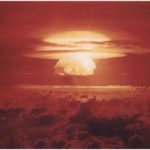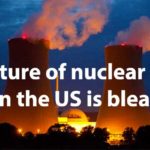| Jun 13, 2018 00:00 IST
So why is this meeting and the statement both historic and significant? What are its implications for us in India and South Asia?
Historic this certainly is, for a range of reasons that have been elaborated globally by media and political commentators over recent weeks.
The “on again-off again” summit had left many sceptical about the sincerity of intentions on both sides. And then, incredibly, the event happened.
The long-time adversaries, the US and North Korea, actually met face to face on Sentosa island in Singapore on Tuesday morning and released a statement that is as significant for global peace as it is for the nuclear disarmament movement world wide.
No doubt the policy pundits and strategic analysts will have a field day writing, speaking and making their prognoses at every possible forum across the world. No doubt, there will be as much to celebrate as to urge caution going forward.
For us in India – a nuclear weapons state located next to a not-so-friendly neighbour to our west that is also a nuclear#weapons power – it is important we assess the implications of this meeting and statement.
As a former head of the Indian Navy, and one who had commanded a fleet that included a nuclear-powered submarine, I had indeed supported India having the nuclear option while in service.
However, for a number of good reasons, I have reviewed and revised my position on nuclear weapons. And since India decided to test her bomb at Pokhran in May 1998, followed by Pakistan shortly thereafter, I have been outspoken in my opposition to the stockpiling, testing and use of nuclear weapons.
It was on June 9, 1988, that India, through the then Prime Minister, Rajiv Gandhi, in a historic speech to the UN, termed “nuclear deterrence” the “ultimate expression of the philosophy of terrorism, holding humanity hostage to the presumed security needs of a few”.
“In line with India’s decades-long pursuit of a world free of nuclear weapons, the ‘Action Plan for a Nuclear Weapon-Free and Non-Violent World Order’ sought a universal, comprehensive and legally binding commitment to the staged elimination of nuclear weapons within a defined time-frame,” a commentator recently remarked.
As rightly highlighted by observers, “it remains, till date, the only available plan of action on the subject of nuclear disarmament ever presented by a head of government to the UN”.
Today more than ever in recent strategic negotiations and discussion, I believe it is important to revisit and recall India’s historical positions on the possession and use of nuclear weapons.
It was one built on the principles of peace and non-violence and, therefore, opposed nuclear arms on several major counts that hold truer today when there is growing poverty and disparity, the perils of climate change and the relentless destruction of the world’s fragile natural resources.
The above holds true for our nation as much as for others in our neighbourhood and in South Asia.
The focus of our attention and our activities should be directed towards the improvement of the quality of life of our people, with special reference to our region. Democracy and peace are essential preconditions for this to be achieved.
The building and stockpiling of nuclear weapons, arguably the most destructive and the most expensive weapons, directly affects and takes away scarce and precious resources from the real development of all of our people.
Already the conflict between our two nuclear-armed nations, India and Pakistan, has effectively rendered Saarc impotent and made any possibility of cooperation and progress of the regional body unviable.
There are moments in history when certain totally unexpected and dramatic developments offer us opportunities that should be grasped with both hands— and here I mean by the leaders on both sides of our tragically divided and hostile borders.
If President Donald Trump and President Kim Jong-un, two unpredictable, dictatorial and powerful men from totally diverse political systems and social, religious and cultural backgrounds, can put decades of accumulated baggage behind them and make this stupendous effort towards a new beginning, it surely is possible for India and Pakistan to do likewise.
The bitter legacy of Partition notwithstanding, our peoples have much more in common with each other by way of a shared history, geography, language, religion, food, music and culture.
The leaders of our nations owe it to our people to seize on this initiative to restart dialogue, open up borders and boundaries and revisit our unreasonable visa regimes as a starting point towards an eventually nuclear-free South Asia.
To my mind, this is truly a moment that provides the Indian Prime Minister and his counterpart across the border in Pakistan a historic opportunity that might not come again in a hurry.
India has always taken the high moral ground on matters like nuclear disarmament, democracy and peace. Alas, in recent times, too many of our foreign policy interventions and actions have smacked of “theatrics and public relations” rather than statesman-like and thought-through positions and principled diplomacy, the sort that had earned India the respect and global standing that we are still riding.
Surely, we do not want to remain or be seen to be on the wrong side of history?
Some decisions— be it our position in Indonesia recently with respect to the patrols in the Straits of Malacca or, indeed, the skipping of the important negotiations last year when the UN adopted the Treaty on the Prohibition of Nuclear Weapons— have not served us well.
And for a country that said it would support all efforts to disarm nuclear weapons if comprehensive plans for a universal nuclear disarmament were presented, our subsequent failure to uphold these principles has been dismal and disappointing.
The absence of Indian diplomats from the award of the Nobel Prize to ICAN (International Campaign to Abolish Nuclear Weapons) and the Japanese Hibakusha (survivor of the Hiroshima and Nagasaki atomic bombings), Setsuko Thurlow, is just one example of our about-turn.
So it is that I argue that this is a wonderful moment for the world— and a historic opportunity for India and Pakistan to show the world that we can and will turn back the clock— work for restoration of our ancient civilisational values and tradition, come to the negotiating table, and create history in our region.
The Bulletin of Atomic Scientists had recently moved forward the hands of the Doomsday Clock to two minutes to midnight, highlighting the imminent danger of nuclear confrontation.
Perhaps the Sentosa meeting might help set it back. And without doubt, our leaders in this region can play the most important role in ensuring that the hands of that mythical clock are turned further back.
Source : https://www.telegraphindia.com


